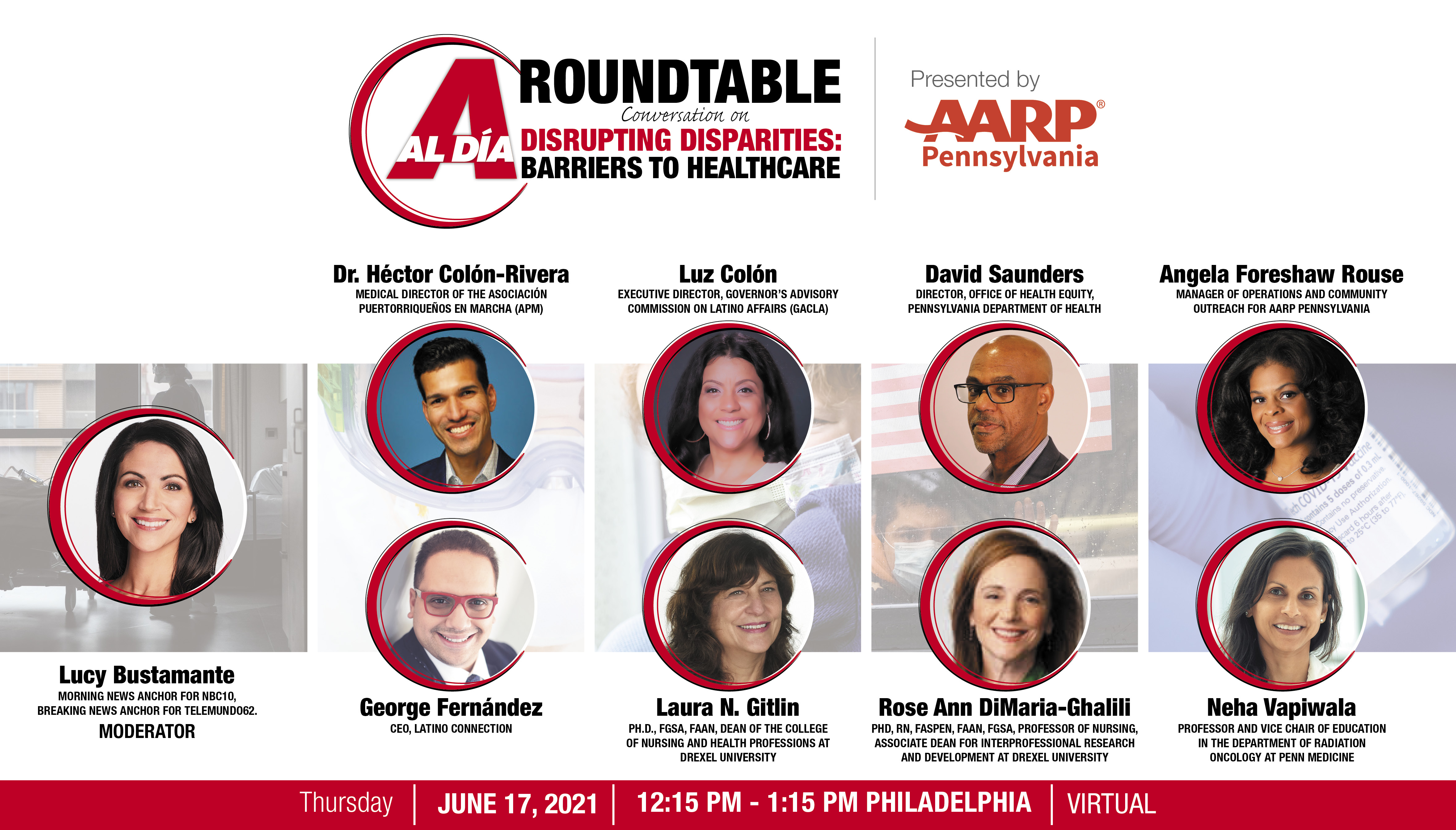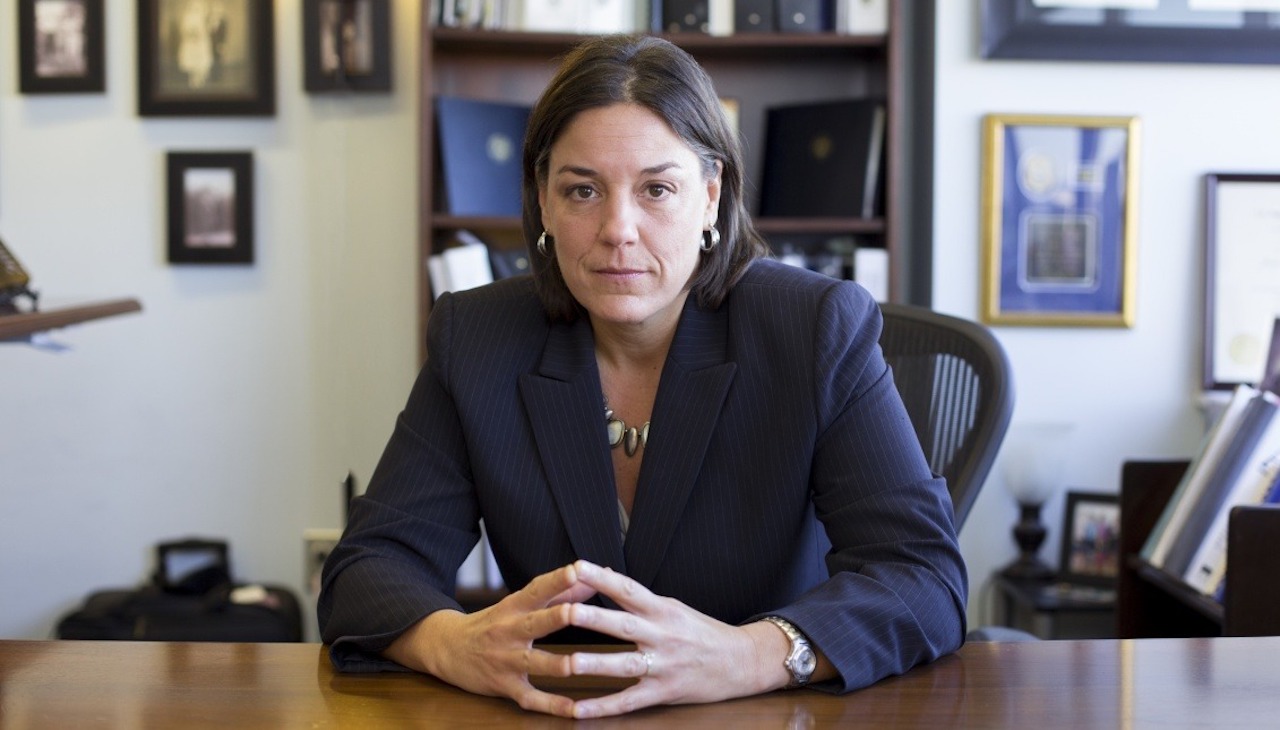
Identifying and addressing barriers to healthcare in Pennsylvania
On June 17, a well-versed panel of state officials, medical professionals, researchers and community partners took part in a virtual roundtable discussion…
Geography, race, ethnicity and economic status are all key factors in restricting access to healthcare services for many Pennsylvanians.
Some of the most impacted are those aged 50+ and who are living in underserved communities, with rural and urban areas as the most impacted in the commonwealth.
These communities are often mostly populated by those who are Hispanic/Latinx or Black/African American.
With the COVID-19 pandemic making these disparities even more pronounced, access to healthcare services is more critical than ever before.
In May 2021, AARP Pennsylvania and Drexel University’s College of Nursing and Health Professions published a new report that provides a deep dive into the factors that are leading to inequitable access to healthcare in Pennsylvania, its impact and what we all can do to help address each of them.
On June 17, the AL DÍA Roundtable: Disrupting Disparities - Barriers to Healthcare took place and provided an opportunity to talk about many of these existing barriers.
According to Angela Foreshaw-Rouse, manager of operations and community outreach for AARP Pennsylvania, one of the most pressing issues found in the report is the digital divide.
“The digital divide is a great risk to how connected we are as a society,” said Foreshaw-Rouse.
Particularly throughout the pandemic, access to online services has been a valuable resource to connect with family and loved ones, but also to navigate one’s health.
The COVID-19 pandemic has made telehealth a more critical option to address a person’s health, and a lack of quality internet and broadband access can be troubling in both the short- and long-term.
Dr. Laura Gitlin, Dean of the College of Nursing and Health Professions at Drexel University, said that when it comes to the digital divide, there are two main points to consider.
“The digital divide really simply refers to access to consistent internet services, but we have to remember another piece to that, and that is computer literacy,” said Gitlin. “It goes hand-in-hand.”
It is one thing to have access to the internet, but it is another to be able to use it comfortably and grasp the information being presented.
According to the report, only four counties in the state have over 95% of the population who can use or connect to the internet in their household. In addition, 12% of counties have 8% of households with no internet access.
“This digital divide is particularly acute for the older population,” said Gitlin.
She noted that the issue became particularly glaring due to the pandemic, as many senior centers, community organizations and libraries had to shut down.
“These are places in which older adults often rely on to have access to the internet and to use the computer,” added Gitlin.
This raises the profile of smartphones as another way to access the internet from home.
To this end, Foreshaw-Rouse noted that one of the ways to provide quality healthcare is to increase the ways we are all able to connect digitally.
“We really want to work in Pennsylvania to provide healthcare workforces to be up-to-date, to be culturally competent and to provide care differently,” she said.
Within various industries of work, there has been a recurring case of workforce shortages, which was made even more glaring by the pandemic.
“It is not a new problem to our nation, and I believe it’s a systematic issue, and it worsened during COVID-19,” said Hector Colón-Rivera, medical director of APM.
In his view, education and creating opportunities for youth are the keys to addressing this concern.
It has been shown that there is a disproportion between computer and technology access and resources between students of color, and their White counterparts.
From standardized tests to access to technology at home, those are all big factors that play a role in the likelihood of success of youth of color.
“I think we are not giving our people the opportunities to develop work skills,” said Colón-Rivera.
The Hispanic/Latino community comprises more than 15% of the population of the state, but in the medical workforce that number is close to 3%.
“There definitely is a huge demand for education and training,” said Luz Colon, executive director of the Governor’s Advisory Commission for Latino Affairs (GACLA).
A workforce that is unprepared to address the complex and co-morbid conditions of many individuals of color, can lead to problematic outcomes.
Colon added that the solutions to this lies in implementing training services, and investing in different programs that benefit communities of color.
The state of Pennsylvania does have some current programs and initiatives in place that work to help strengthen its workforce.
In 2018, Governor Tom Wolf announced PASmart, a workforce development initiative that aims to connect Pennsylvanians with resources for working and training across the state, with a particular focus on science and technology.
The following year, Governor Wolf created the Keystone Economic Development and Workforce Command Center.
The goal was to expand the collaboration between government and the private sector in an effort to address the skills gap and worker shortages.
The COVID-19 pandemic made both initiatives even important because the need for technology became more paramount, and with many people losing their jobs, existing work skills that are transferable are critical.
“We need all community partners, all governmental entities to come together to be able to share the information… the opportunities that we have here so that we can be able to help people get trained and then be able to have good paying jobs,” said Colon.
By definition, a pharmacy desert is an area without close access to a pharmacy.
For urban areas, a pharmacy desert would constitute a low-income community or neighborhood without a pharmacy within a half-mile radius without vehicle access, or within a mile radius for those with adequate vehicle access. In rural areas, the distance extends to a 10-mile radius.
Pharmacy deserts are often also communities that lag behind in average income levels, access to health insurance and transportation.
“This really impacts life,” said Dr. Rose Ann DiMaria-Ghalili, Associate Dean for Inter-professional Research and Development and a Professor of Nursing. “Those that live in a pharmacy desert really are at risk for health disparities.”
Living in a pharmacy desert can mean a lack of access to medication to treat chronic conditions. This can be further magnified if internet access is yet another barrier to health.
In addition, with mass vaccination sites for COVID-19 dwindling across the state, having access to pharmacies that are distributing the vaccine becomes even more critical.
“If there’s no pharmacy in the community, where will people get their medications or their vaccines?” asked Dr. DiMaria-Ghalili.
She noted that it is important to find ways to increase access to pharmacies for those who need it most, including the older population and those with preexisting conditions.
Areas or populations that specifically have too few primary care providers, high infant mortality rates, high poverty or high elderly populations are considered medically underserved areas.
RELATED CONTENT
According to the report, 14% of Pennsylvanians live in a medically underserved area. In addition, 22% live in areas that are considered both medically underserved and designated a health professions shortage area.
“It really speaks to a lot of the barriers... and the cultural confidence that is needed to reach many of the populations that are currently medically underserved, and the history of distrust and mistrust in the healthcare system on top of limited access can just further exacerbate this issue,” said Neha Vapiwala MD, FACR, professor and Vice Chair of Education in the Department of Radiation Oncology at the Perelman School of Medicine at the University of Pennsylvania.
She noted that the issue is much more prevalent in the inner cities.
Her work revolves around finding additional ways to help the population understand the underlying risk factors and to feel more comfortable with their providers so any underlying misperceptions can be addressed.
“A lot of this has to happen through community and through partnerships with individuals in the community who are trusted leaders,” said Dr. Vapiwala.
“It’s really about trust and providing accurate information,” she added.
“Where we live, work and play, where we worship… dictates the length of our lives and the quality of our lives,” said David Saunders, Pennsylvania Department of Health as the Director of Health Equity.
Since it was integrated into the PA Department of Health, the Office of Health Equity has worked to ensure that everyone is given a fair and just opportunity to attain their highest level of health.
However, when it comes to communities of color, and those who live in rural areas of the state, the opportunity to attain that highest level of health is often much lower.
For many Hispanic and Black residents in the state, there is a lower likelihood of having health insurance or health providers, and there is often more difficulty paying for hospital visits or services.
According to Saunders, looking at the ‘why’ behind those numbers is the most effective way to address them.
“We do have to have that uncomfortable conversation about systemic racism. We do have to look at the fact that in many Latino and African American communities, the academic system is less resourced,” he said.
Collaboration across agencies that can address the various elements that make up these disparities is key.
“One is the investment in these communities. We know where the vulnerable communities are in the state. We’re talking now about how we can invest money into those communities from a variety of different sectors,” said Saunders.
“And lastly, before we look at different initiatives to ameliorate some of these issues, to reduce some of these disparities, we need to listen to the residents of those communities… they can help us figure out the best ways to address the issues that are most germain to them.”
It takes a multi-layered and effortful approach.
A common theme throughout the virtual roundtable discussion was the value of working together and collaboration.
While the participants of the roundtable were from different walks of life and various sectors of the workforce, the desire to address the health disparities in the state remained.
“We want to continue to work with our elected officials, our for-profit and nonprofit entities, as well, to have some culturally competent, in-real time, education pieces that are easy to understand,” said Foreshaw-Rouse.
She added that the average level to communicate across the state is through a sixth to seventh grade reading level. Therefore, regardless of the avenue or platform these messages are being relayed — through television, radio, digitally, etc. — it’s important to do so in a way that anyone can understand.
Funding, and convening stakeholders are also critical pieces of the puzzle.
To this end, she stresses the importance of filling out the U.S. Census every 10 years.
“Communities have to step up when there’s the American community survey that comes through… because that’s how we make important decisions and funding sources are made, and that’s how we know about people’s health,” said Dr. DiMaria-Ghalil. “So we really have to participate.”
Everyone can play a critical role in helping reduce the health disparities that are so prevalent in the state.
“We have the opportunity to effect change, one-by-one,” said Dr. Vapiwala.










LEAVE A COMMENT: